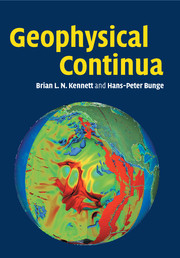1 - Introduction
Published online by Cambridge University Press: 17 March 2011
Summary
The development of quantitative methods for the study of the Earth rests firmly on the application of physical techniques to the properties of materials without recourse to the details of atomic level structure. This has formed the basis of seismological methods for investigating the internal structure of the Earth, and for modelling of mantle convection through fluid flow. The deformation behaviour of materials is inextricably tied to microscopic properties such as the elasticity of individual crystals and processes such as the movement of dislocations. In the continuum representation such microscopic behaviour is encapsulated in the description of the rheology of the material through the connection between stress and strain (or strain rate).
Different classes of behaviour are needed to describe the diverse aspects of the Earth both in depth and as a function of time. For example, in the context of the rapid passage of a seismic wave the lithosphere may behave elastically, but under the sustained load of a major ice sheet will deform and interact with the deeper parts of the Earth. When the ice sheet melts at the end of an ice age, the lithosphere recovers and the pattern of post-glacial uplift can be followed through raised beaches, as in Scandinavia.
- Type
- Chapter
- Information
- Geophysical ContinuaDeformation in the Earth's Interior, pp. 1 - 18Publisher: Cambridge University PressPrint publication year: 2008



